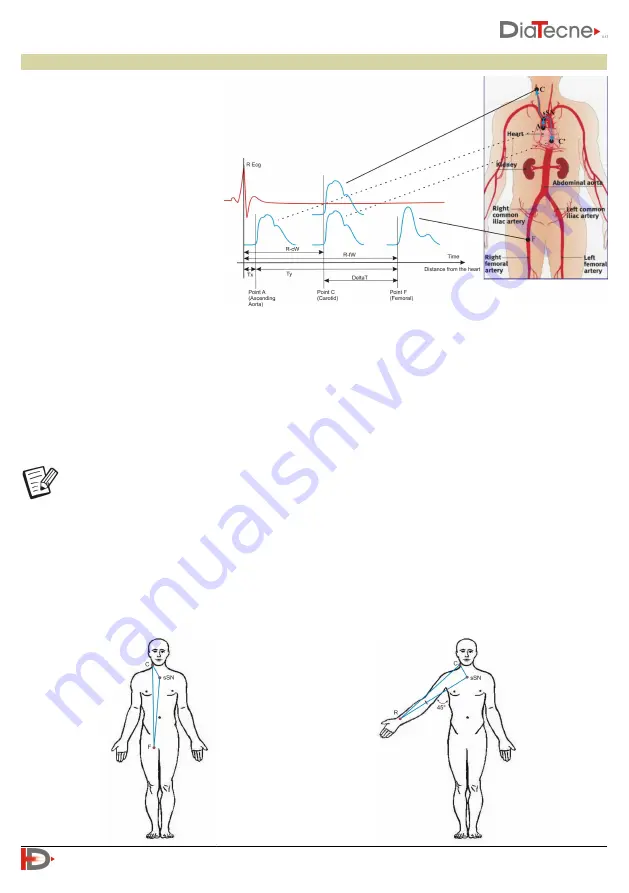
Distance Measurement
2) Subtractive Method:
This method is based on the fact that
the initial pressure wave, once it reaches the bifurcation at the suprasternal notch (sSN in the figure),
propagates both towards the Carotid and towards the Aorta. Assuming similar propagation characteristics
in the two sections, when the rising pressure wave will have arrived in C (Carotid), the descending pressure
wave will have arrived in C ', equidistant from sSN with respect to C. On the basis of these considerations,
the distance actually traveled by the pressure wave corresponding to the DeltaT delay in the example in
the figure, is equivalent to the segment C '- F and therefore distance = (sSN - F) - (C' - sSN) which can be
approximated in distance = (sSN - F) - (C - sSN).
Whichever method is chosen, it is still necessary to enter the three distances (Carotid - P_A,
sSN - P_A, Carotid - sSN) so that it is possible to calculate all parameters by the software.
6
User Manual
PulsePen
- V. 5.0_b
1) Direct Method:
The direct distance between the
Carotid (C) and the Peripheral
Artery (P_A), (F - Femoral in the
example) is measured. The result is
automatically multiplied by 0.8 by
the software, according to the
accredited guidelines.
Measurement of distances for the Femoral, Tibial,
Dorsalis Pedis Artery:
A tape measure is used to
measure the distances between the Carotid Artery
and the Peripheral Artery (Femoral in the
example), between the Carotid Artery and the
suprasternal notch and finally between the
suprasternal notch and the Peripheral Artery.
Measurement of distances for the Brachial, Radial
Artery:
with the arm at 45 degrees as in the figure,
a tape measure is used to measure the distances
between the Carotid and the Peripheral Artery
(Radial in the example), between the Carotid and
suprasternal notch and finally between the
suprasternal notch and Peripheral Artery.
A tape measure is used to measure the distance between the landmarks: this
can be estimated mainly in two ways, both supported by the PulsePen
Software:





















